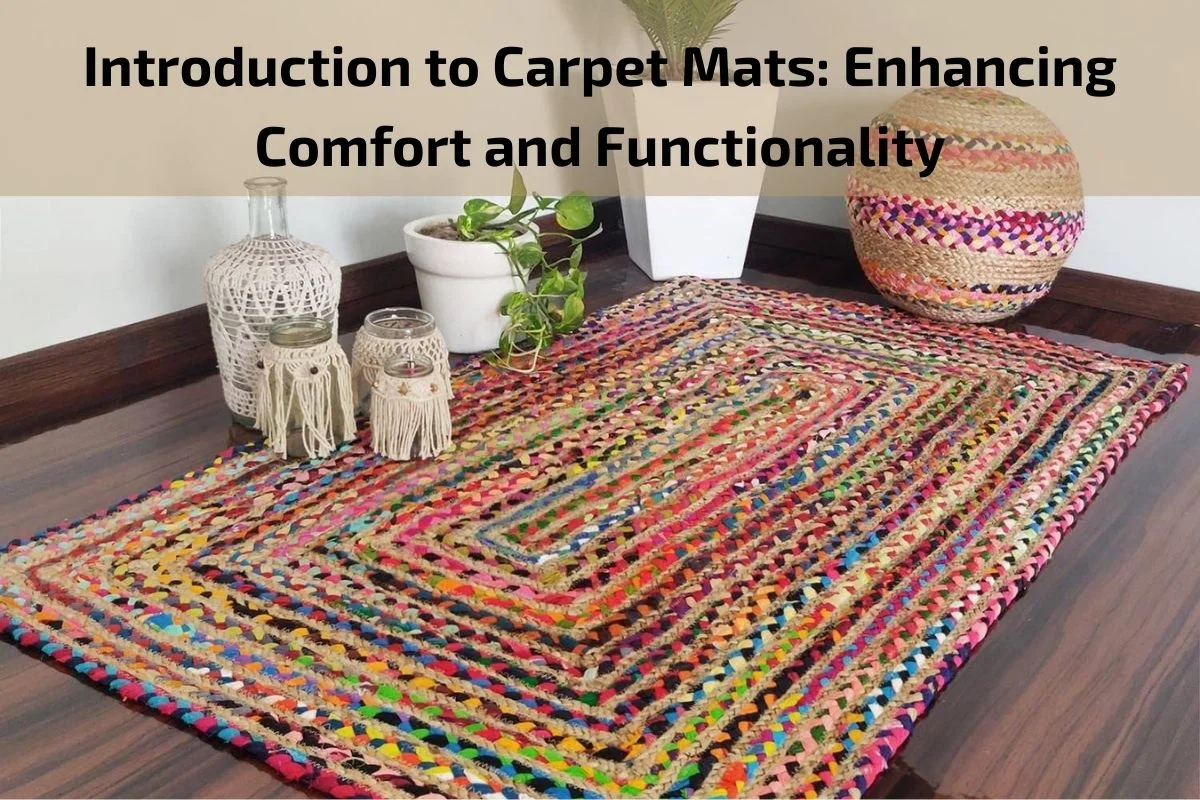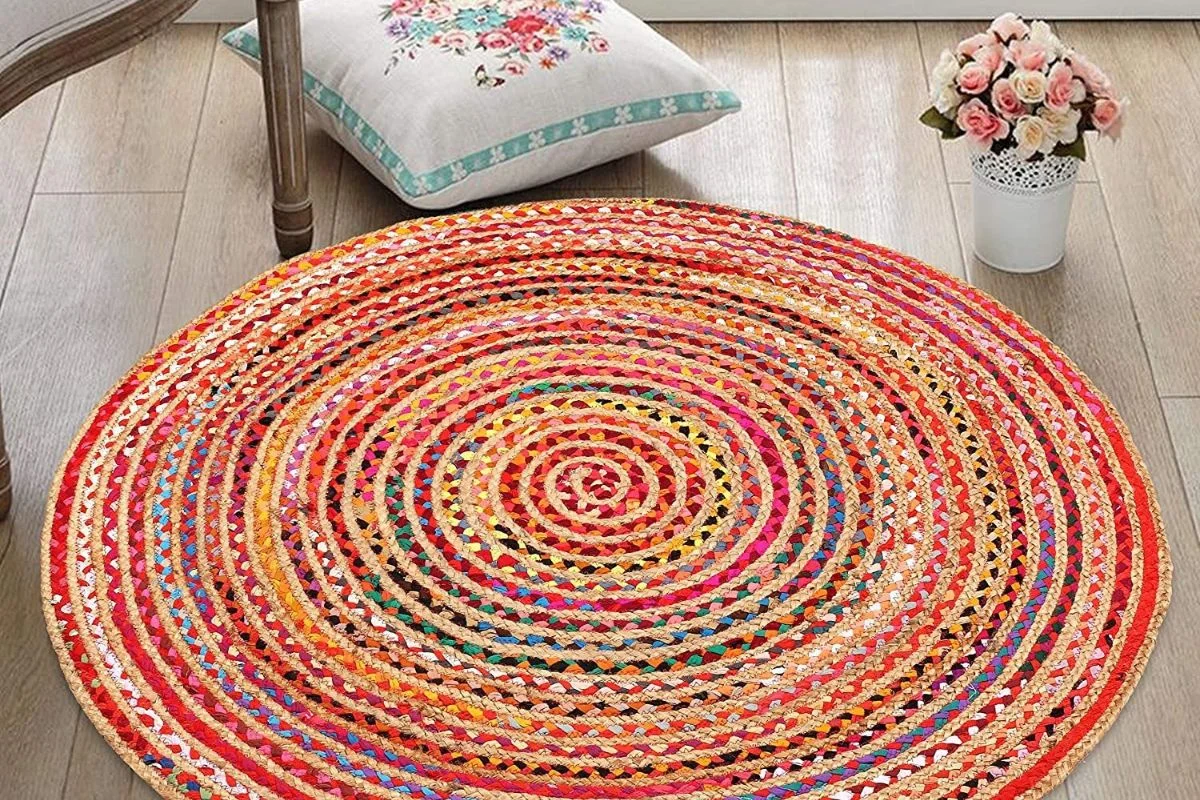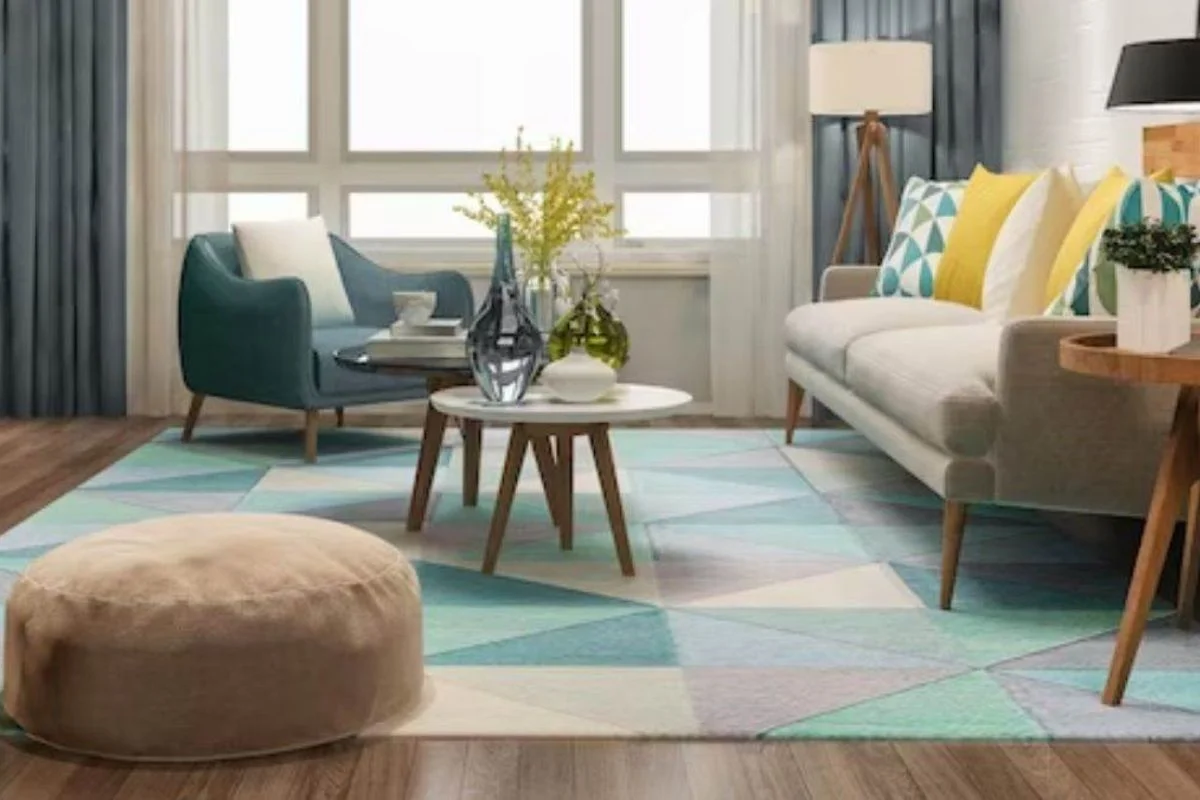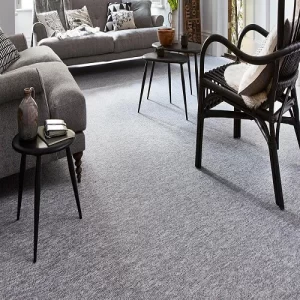Carpet mats serve as versatile and practical additions to both residential and commercial spaces, offering a blend of comfort, functionality, and aesthetic appeal. As the first point of contact when entering a room, carpet mats play a crucial role in welcoming guests, trapping dirt and moisture, and protecting flooring surfaces. In this introduction, we explore the myriad benefits and features of carpet mats, highlighting their importance in enhancing the overall comfort and functionality of interior environments.
From the moment one steps foot inside a space, the tactile sensation of a soft and plush carpet mat underfoot immediately sets the tone for comfort and warmth. Beyond their luxurious feel, carpet mats provide a host of functional benefits, including moisture absorption, sound insulation, and slip resistance. Whether placed at entryways, hallways, or high-traffic areas, carpet mats help to maintain cleanliness and safety while adding a touch of style to any setting.
Importance of Carpet Mats in Interior Spaces
Introduction to Entryway Functionality: a. Setting the Initial Impression: Carpet mats are the first point of contact in many interior spaces, serving as the initial impression for guests and visitors. They offer a warm welcome and contribute to the overall atmosphere of hospitality and comfort. b. Preserving Cleanliness: Entryways are vulnerable to dirt, moisture, and debris tracked in from outside. Carpet mats play a crucial role in trapping these elements, preventing them from spreading throughout the interior and preserving the cleanliness of floors.
Protection of Flooring Surfaces: a. Preventing Wear and Tear: High-traffic areas, such as entryways and hallways, are prone to accelerated wear and tear. Carpet mats act as a protective barrier, absorbing the impact of foot traffic and reducing the risk of scratches, scuffs, and damage to flooring surfaces. b. Extending Lifespan: By shielding floors from the abrasive effects of shoes and other objects, carpet mats help prolong the lifespan of flooring materials, saving homeowners and businesses money on costly repairs and replacements in the long run.
Safety and Slip Prevention: a. Minimizing Slip Hazards: Wet and slippery floors pose a significant safety risk, especially in areas prone to moisture buildup. Carpet mats with non-slip backings provide traction and stability underfoot, reducing the likelihood of slips and falls. b. Enhancing Safety Standards: Employers and property managers have a duty to maintain safe premises for employees, customers, and guests. Carpet mats contribute to compliance with safety regulations and standards by mitigating slip hazards and promoting a secure environment.
Comfort and Warmth: a. Underfoot Comfort: Walking on hard, cold floors can be uncomfortable, especially in colder climates. Carpet mats offer a soft and cushioned surface that provides comfort and warmth, making the entry experience more enjoyable for occupants. b. Creating a Cozy Atmosphere: In residential settings, carpet mats add a cozy touch to entryways and living spaces, inviting residents and guests to feel at ease and relaxed as they enter the home.
Aesthetic Appeal and Branding: a. Enhancing Interior Design: Carpet mats come in a variety of colors, patterns, and designs that complement the aesthetic of interior spaces. They serve as decorative accents that add visual interest and personality to entryways and other areas. b. Branding Opportunities: For businesses and commercial establishments, carpet mats offer branding opportunities through custom logos, messages, and graphics. They reinforce brand identity and leave a lasting impression on customers and clients.
Benefits of Carpet Mats
Dirt and Debris Trapping: a. Effective Dirt Removal: Carpet mats are designed with fibers that efficiently trap dirt, dust, and debris brought in from shoes, preventing them from spreading onto interior floors. b. Maintenance Reduction: By capturing dirt and debris at the entrance, carpet mats minimize the need for frequent cleaning and vacuuming of interior flooring surfaces, saving time and effort in maintenance routines.
Moisture Absorption and Floor Protection: a. Absorbing Moisture: Carpet mats with absorbent materials help to soak up moisture from shoes, umbrellas, and paws, preventing water damage and staining on interior floors. b. Protecting Floor Surfaces: By creating a barrier against moisture, carpet mats shield flooring surfaces from water-related damage, such as warping, discoloration, and mold growth.
Safety Enhancement: a. Slip Resistance: Many carpet mats feature non-slip backings or textured surfaces that provide traction and stability, reducing the risk of slips and falls on wet or slippery floors. b. Accident Prevention: By minimizing slip hazards, carpet mats contribute to a safer environment for occupants, employees, customers, and guests, helping to prevent accidents and injuries.
Comfort and Warmth: a. Cushioned Surface: The soft and cushioned surface of carpet mats offers comfort and support underfoot, making the entry experience more pleasant and comfortable for users. b. Thermal Insulation: In colder climates, carpet mats provide thermal insulation, helping to retain heat and prevent cold drafts from entering interior spaces, thus enhancing overall comfort levels.
Flooring Preservation: a. Protection Against Wear and Tear: Carpet mats act as a protective barrier, absorbing the impact of foot traffic and preventing scratches, scuffs, and dents on interior flooring surfaces. b. Prolonged Floor Lifespan: By reducing the incidence of damage and wear, carpet mats help to prolong the lifespan of flooring materials, preserving their appearance and structural integrity over time.
Aesthetic Enhancement: a. Decorative Accents: Carpet mats come in a variety of colors, patterns, and designs that complement interior decor schemes, adding visual interest and personality to entryways and other areas. b. Branding Opportunities: For businesses and commercial settings, carpet mats offer opportunities for branding and customization with logos, messages, and graphics, reinforcing brand identity and creating a memorable impression.
Types of Carpet Mats
Entryway Mats: a. Standard Entry Mats: These mats are typically rectangular in shape and are placed directly in front of entry doors to capture dirt, moisture, and debris from shoes. b. Double-Entry Mats: Designed for double doors or wider entryways, these larger mats provide extended coverage and are often used in high-traffic areas.
Runner Mats: a. Long and Narrow Design: Runner mats are elongated mats that cover corridors, hallways, and narrow spaces, providing protection and comfort along frequently traveled paths. b. Customizable Lengths: Runner mats are available in various lengths to accommodate different hallway dimensions and can be trimmed to fit specific spaces if necessary.
Logo Mats: a. Branding and Personalization: Logo mats feature custom designs, graphics, and logos that reflect the branding and identity of businesses, organizations, or establishments. b. Indoor and Outdoor Options: Logo mats can be used indoors at entryways, lobbies, or reception areas, as well as outdoors at entrances or promotional events.
Anti-Fatigue Mats: a. Ergonomic Design: Anti-fatigue mats are engineered to reduce fatigue and discomfort for individuals who stand for extended periods, such as workers in retail, hospitality, or industrial settings. b. Cushioned Support: These mats feature cushioned surfaces that provide support and relieve pressure on joints, muscles, and feet, promoting better posture and comfort.
Kitchen Mats: a. Grease-Resistant Materials: Kitchen mats are designed to withstand spills, grease, and food debris commonly found in kitchen environments, offering durability and easy maintenance. b. Anti-Slip Features: Kitchen mats often feature textured surfaces or non-slip backings to prevent slips and falls on slick surfaces.
Outdoor Mats: a. Weather-Resistant Construction: Outdoor mats are constructed from durable materials that withstand exposure to sunlight, moisture, and harsh weather conditions, maintaining their appearance and functionality over time. b. Scraper and Wiper Mats: These mats are designed to remove dirt, mud, and debris from shoes before entering indoor spaces, helping to keep interior floors clean and dry.
Custom Mats: a. Tailored Solutions: Custom mats are made-to-order to fit specific dimensions, shapes, and design requirements, offering personalized solutions for unique spaces and applications. b. Branding and Design Options: Custom mats allow for branding, logos, and custom designs to be incorporated, making them ideal for businesses, events, or promotional purposes.
Choosing the Right Carpet Mat
Consideration of Space and Use: a. Entryway Size: Measure the dimensions of the entryway or area where the carpet mat will be placed to ensure proper fit and coverage. b. Traffic Volume: Evaluate the level of foot traffic in the area to determine the durability and thickness required for the carpet mat. c. Indoor vs. Outdoor Use: Determine whether the carpet mat will be used indoors or outdoors, as outdoor mats require weather-resistant materials and construction.
Material and Construction Features: a. Absorbency: Choose carpet mats with absorbent materials such as nylon, polyester, or cotton to effectively trap dirt, moisture, and debris. b. Durability: Select mats made from durable materials such as rubber or polypropylene that withstand heavy foot traffic and maintain their appearance over time. c. Non-Slip Backing: Look for mats with non-slip rubber or vinyl backing to prevent movement and minimize the risk of slips and falls, especially in high-traffic areas. d. Stain Resistance: Consider mats with stain-resistant properties that make cleaning and maintenance easier, particularly in areas prone to spills and stains.
Size and Shape Options: a. Standard Sizes: Choose from standard sizes and shapes such as rectangular, square, or round mats to fit common entryways and spaces. b. Customizable Options: Consider custom mats that can be tailored to specific dimensions and shapes for irregular or non-standard areas, providing a perfect fit and maximum coverage.
Budget Considerations: a. Cost vs. Quality: Balance budget constraints with the quality and durability of the carpet mat, opting for high-quality materials and construction that offer long-term value and performance. b. Cost of Maintenance: Factor in the cost of maintenance and cleaning supplies when selecting a carpet mat, choosing materials and designs that are easy to clean and maintain.
Brand Reputation and Reviews: a. Research Brands: Explore reputable brands and manufacturers known for producing high-quality carpet mats with reliable performance and durability. b. Read Reviews: Read customer reviews and testimonials to gauge the satisfaction levels and experiences of other users with specific carpet mat brands and models.
Installation and Placement Tips for Carpet Mat
Clean the Surface: Before installing the carpet mat, ensure that the surface where it will be placed is clean and free of dust, debris, and moisture. This helps prevent the mat from slipping or moving once it’s in position.
Choose the Right Size: Select a carpet mat that fits the dimensions of the area where it will be placed. Avoid mats that are too large or too small, as they may not provide adequate coverage or could create tripping hazards.
Positioning: Place the carpet mat in a strategic location, such as entryways, hallways, or high-traffic areas, where it can effectively trap dirt and moisture from shoes. Make sure the mat lies flat and doesn’t obstruct doorways or walkways.
Secure the Mat: Use adhesive strips, double-sided tape, or non-slip rug pads to secure the carpet mat in place and prevent it from shifting or bunching up. This is especially important for larger mats or mats placed on smooth surfaces like tile or hardwood.
Consider Dual Mats: For extra protection, consider using dual mats – one outside and one inside the entrance. The outdoor mat can help scrape off debris and moisture, while the indoor mat can further trap dirt and water before it reaches interior flooring.
Regular Maintenance: Keep the carpet mat clean and well-maintained by regularly vacuuming or shaking out debris. Depending on the material, some mats may also be machine washable for easy cleaning.
Rotate and Flip: Periodically rotate or flip the carpet mat to ensure even wear and tear. This helps extend the lifespan of the mat and maintains its effectiveness in trapping dirt and moisture.
Replace When Necessary: Monitor the condition of the carpet mat over time and replace it when signs of wear, tear, or deterioration become evident. A worn-out mat may not provide adequate protection and could pose safety risks.
Maintenance of Carpet Mats
Regular Vacuuming: Vacuum your carpet mats regularly to remove dirt, dust, and debris that accumulate on the surface. Use a vacuum cleaner with a brush attachment or a handheld vacuum to effectively clean the fibers of the mat.
Shake Out or Beat: Periodically take your carpet mats outside and shake them vigorously to dislodge embedded dirt and debris. You can also beat them against a railing or wall to help loosen and remove stubborn particles.
Spot Cleaning: Treat spills and stains on your carpet mats promptly to prevent them from setting into the fibers. Blot the affected area with a clean cloth or paper towel to absorb excess liquid, then gently dab with a mixture of mild detergent and water to remove the stain.
Deep Cleaning: Depending on the level of soiling, deep clean your carpet mats occasionally to maintain their appearance and effectiveness. You can use a carpet cleaner or steam cleaner specifically designed for mats and rugs, following the manufacturer’s instructions carefully.
Air Dry: After cleaning your carpet mats, allow them to air dry thoroughly before placing them back in their original location. Avoid exposing them to direct sunlight or high heat, as this can cause fading or damage to the fibers.
Brushing and Grooming: Use a stiff-bristled brush or carpet rake to fluff up the fibers of your carpet mats and remove any matting or compression. Brushing the mats regularly helps maintain their appearance and extends their lifespan.
Rotate Mats: Rotate your carpet mats periodically to ensure even wear and tear. This helps distribute foot traffic and prevents premature deterioration of specific areas of the mat.
Professional Cleaning: Consider professional cleaning services for your carpet mats, especially if they are heavily soiled or stained. Professional cleaners have the equipment and expertise to deep clean and restore the appearance of your mats effectively.
Check for Wear and Tear: Regularly inspect your carpet mats for signs of wear, fraying edges, or damage. Replace worn-out mats promptly to maintain the functionality and appearance of your flooring.
Conclusion
In conclusion, carpet mats play a vital role in enhancing the cleanliness, safety, and comfort of interior and exterior spaces. Through their ability to trap dirt, moisture, and debris, carpet mats help maintain the integrity of flooring surfaces while reducing the risk of slips, trips, and falls. Their cushioned surfaces offer a welcoming feel underfoot, creating a warm and inviting atmosphere for residents, guests, and customers alike.








